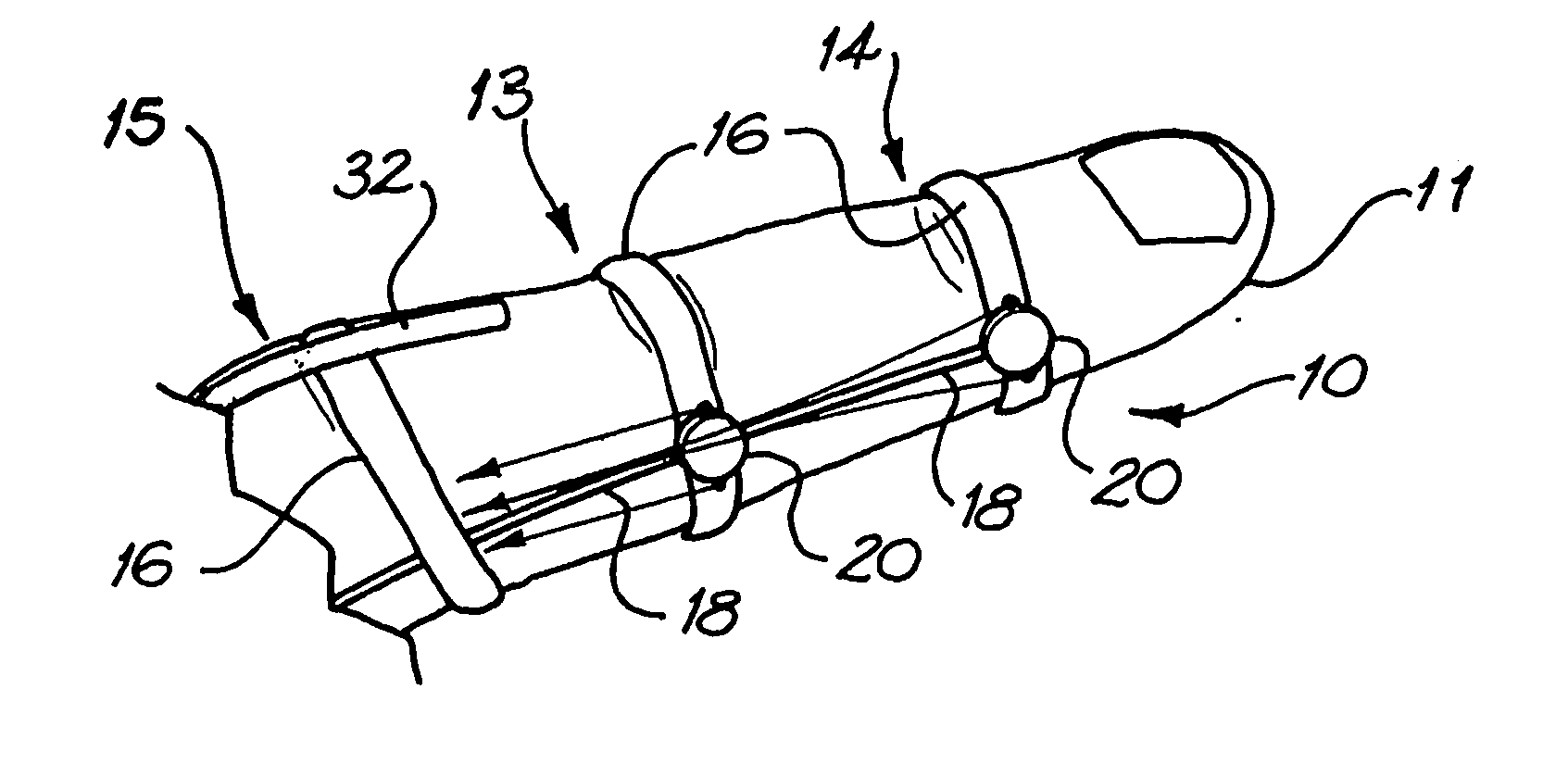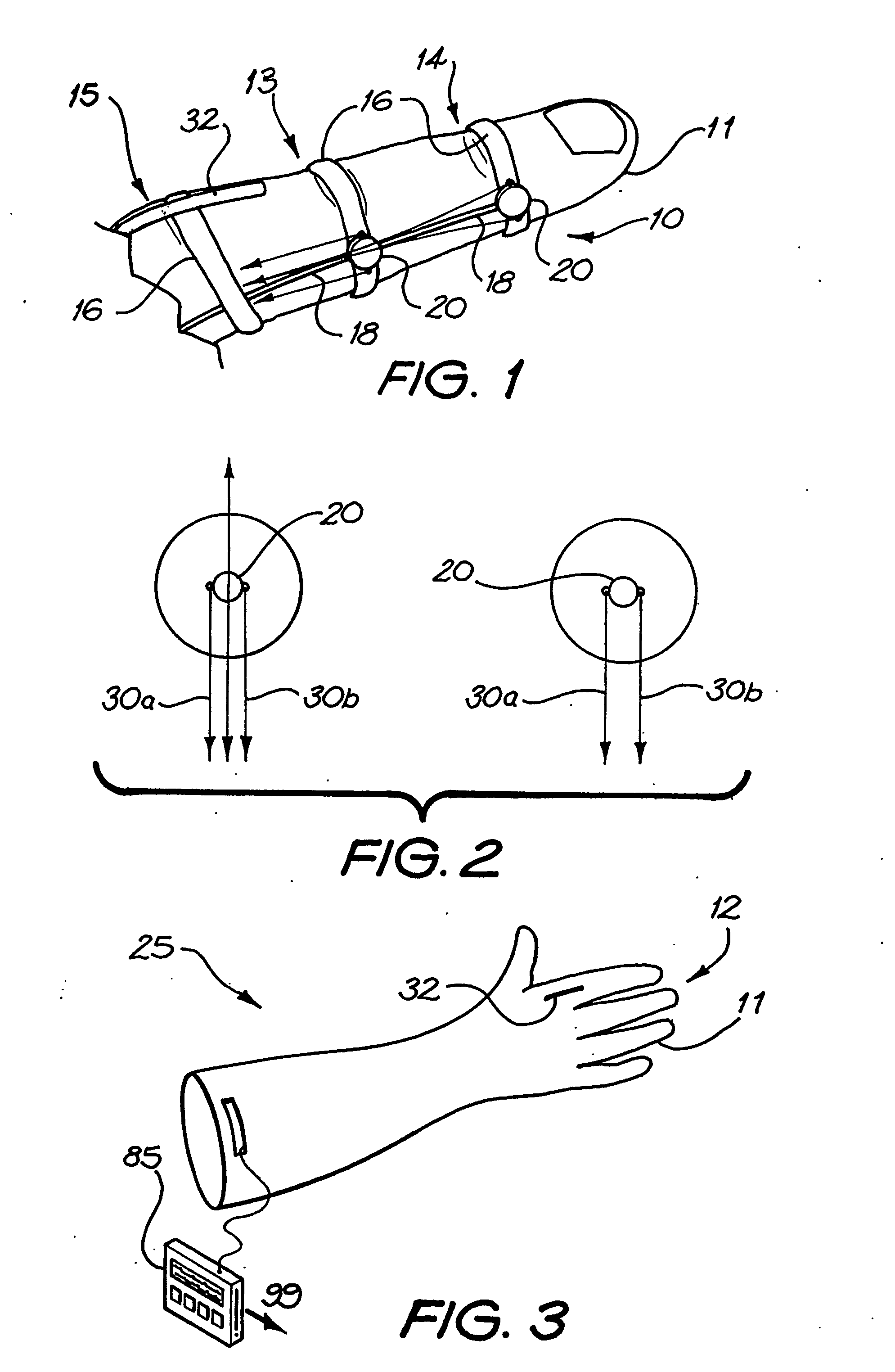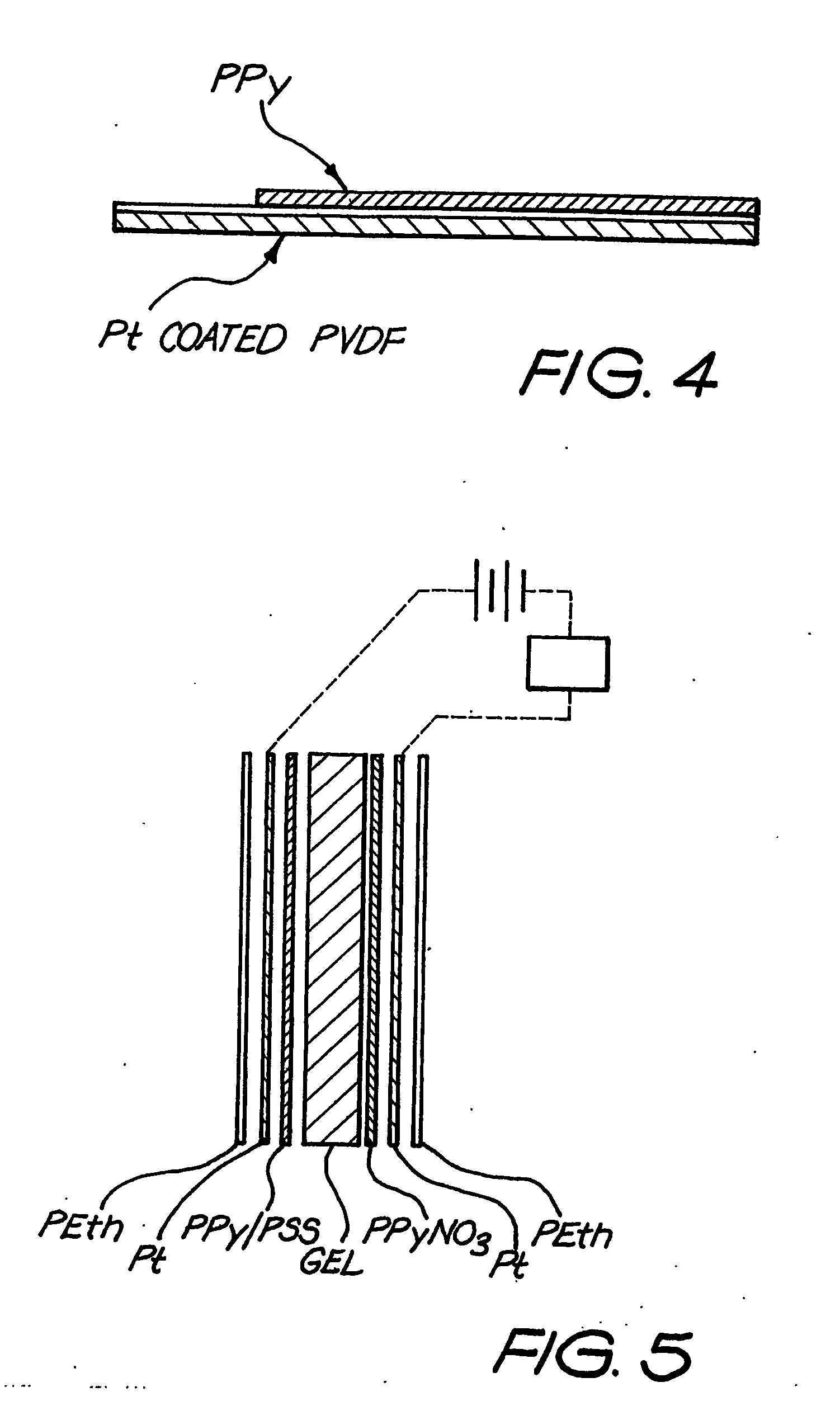Movement facilitation device
a technology of facilitation device and movement, which is applied in the direction of force measurement by measuring optical property variation, force measurement apparatus, force/torque/work measurement, etc., can solve the problems of reducing hand function, reducing hand function, and reducing the potential outcome of aggressive rehabilitation techniques, so as to reduce the risk of damage occurring during operation, maximise the effect of benefit, and ensure the hand is reliabl
- Summary
- Abstract
- Description
- Claims
- Application Information
AI Technical Summary
Benefits of technology
Problems solved by technology
Method used
Image
Examples
example 1
[0433] For the purpose of demonstrating characteristics of electromechanical actuators of the invention, a number of actuators were prepared and tested using polypyrrole polymer with hexafluorophosphate (PF6−) as a dopant as indicated below.
wherein n=2-4, and m=the number of repeat units of the polymer.
[0434] Specifically, the actuators were prepared:
[0435] (a) as a strip by electrodeposition onto a platinum (Pt) plate from a solution containing 0.06 M pyrrole and 0.05 M PPy / PF6 in propylene carbonate at a current density of 0.15 mA / cm2;
[0436] (b) as a tube but with no helical wire conductor using the method described above with reference to FIG. 9 and the solution and electrochemical conditions as for the preparation of the strip actuator in (a) above;
[0437] (c) as a tube with a helical wire conductor using the method described above with reference to the FIG. 9 and using the solution and electrochemical conditions as for the preparation of the strip actuator as in (a) above...
example 2
[0440] A number of tube actuators of the invention incorporating helical conductors were prepared and the performance of three samples is shown in Table 3. [0441] Resistance of the actuators were measured after locating wire inserts 104 and 105 in each end of the polymer tube, respectively. [0442] All the polymer helices were between 45 and 55 mm long. [0443] All polymer helices tested were from the same batch and prepared under a current density of 0.15 mA / cm2 for 24 hours.
[0444] A platinum (Pt) wire helix was used with a pitch of 25 turns / cm.
TABLE 3Comparison of characteristics betweenthe actuators with helical conductorPolymer HelixResistance (Ω)*Strain (%)Strain rate (% / sec)Helix 24-80.71.4Helix 34-80.81.6Helix 54-80.81.6
[0445] In all cases, the inclusion of the helical wire in the actuator resulted in improved electrochemical and actuator performance. By forming the conductor wire into a helix, the wire is able to readily extend and contract in length with expansion and redu...
example 3
[0446] The effect of the pitch of the helical wire on actuator performance was investigated. (Detail how the results were obtained.) The results set out in Table 4 suggests use of low pitch provides better performance as indicated by the increase in strain obtained. The 20 increase in strain at lower pitch is in agreement with the increase in electrochemical efficiency at lower pitch as indicated in FIG. 10.
TABLE 4Effects of pitch of helical conductor on strainunder different applied frequenciesStrain (%)Low PitchedHigh PitchedOperating Frequency(10 turns / cm)(25 turns / cm)10.0 Hz 0.100.15.0 Hz0.280.12.0 Hz0.380.21.0 Hz0.670.160.5 Hz1.00.1
PUM
 Login to View More
Login to View More Abstract
Description
Claims
Application Information
 Login to View More
Login to View More - R&D
- Intellectual Property
- Life Sciences
- Materials
- Tech Scout
- Unparalleled Data Quality
- Higher Quality Content
- 60% Fewer Hallucinations
Browse by: Latest US Patents, China's latest patents, Technical Efficacy Thesaurus, Application Domain, Technology Topic, Popular Technical Reports.
© 2025 PatSnap. All rights reserved.Legal|Privacy policy|Modern Slavery Act Transparency Statement|Sitemap|About US| Contact US: help@patsnap.com



